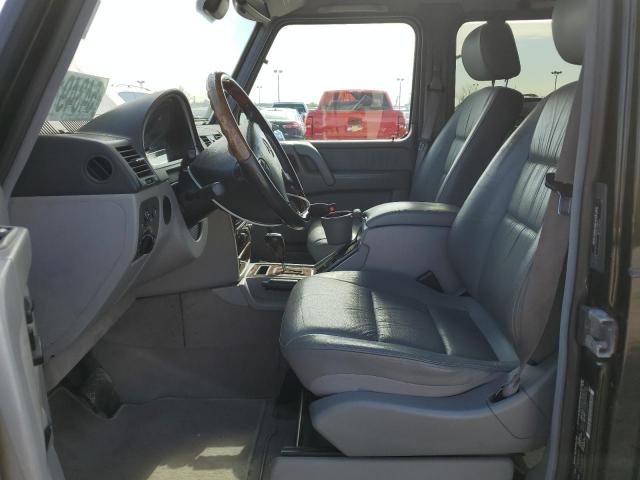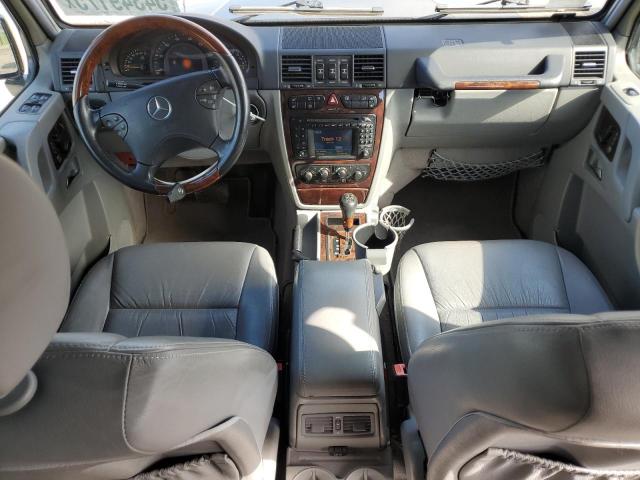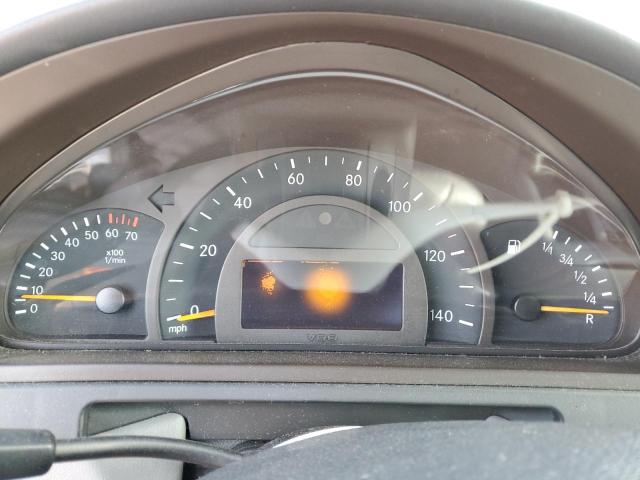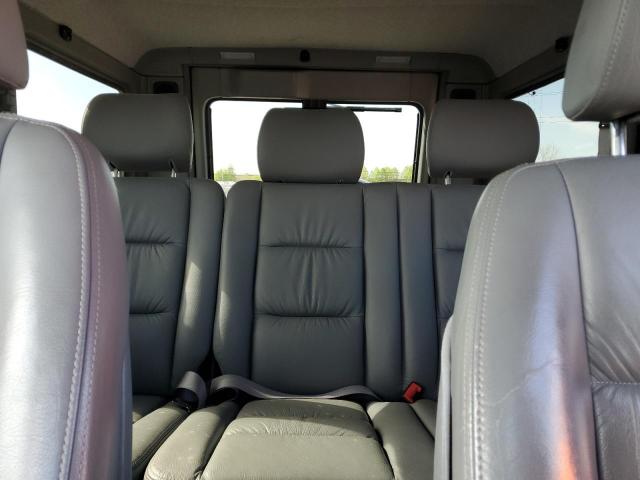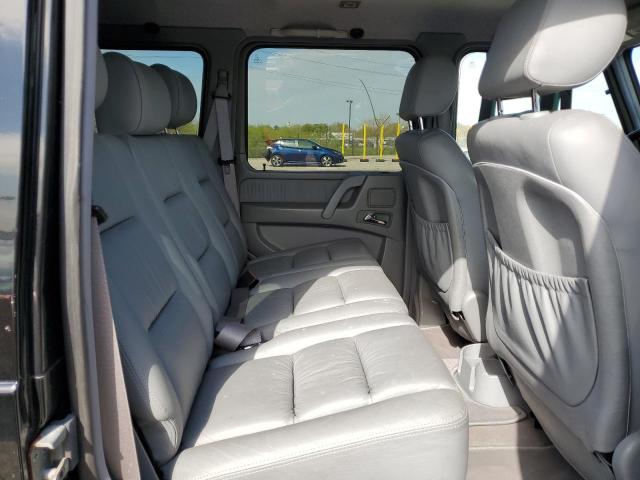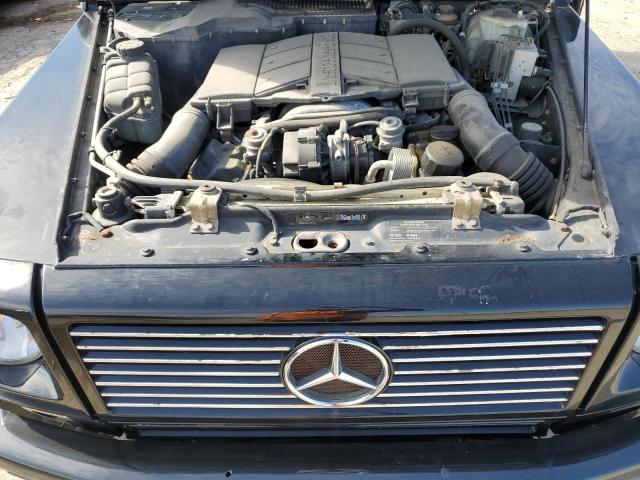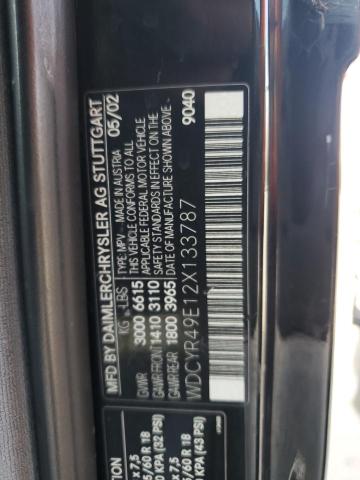2002 MERCEDES-BENZ G-CLASS | WDCYR49E12X133787
 ❯
❯Lot details
- Sale Date2025-06-06
- Lot Number54349175
- ACV24700 $
- Sale documentNJ - CERTIFICATE OF TITLE
- LocationIN - INDIANAPOLIS
- Odometer0 miles (0 km)
- Primary DamageNORMAL WEAR
Vehicle details
- Make
- Model
- Year2002
- FuelGAS
- Engine5.0L 8
- TransmissionsAUTOMATIC
- Drive TypeAll wheel drive
Vehicle specifications
22
~$225,000
Engine: 6.0L twin-turbo V12
Torque: 1,000 Nm
0–100 km/h: ~5.2 s
The G 65 AMG defies physics — and that’s its entire appeal. With a 6.0-liter V12 biturbo producing 612 hp and 1,000 Nm, it accelerates this nearly 2.9-ton body-on-frame SUV from 0–100 km/h in just over 5 seconds. That’s supercar territory — wrapped in a boxy silhouette barely changed since 1979.
Unlike most performance SUVs that chase Nürburgring lap times, the G 65 prioritizes raw, brutal torque and street presence. Its 7G-Tronic transmission, three locking differentials, ladder-frame chassis, and permanent AWD remind you of its military roots — yet the interior features diamond-quilted Designo leather, Burmester audio, and heated rear seats.
It rides high, corners like a truck, and drinks fuel voraciously — but nothing matches its feel. The V12's deep, thunderous growl, the upright driving position, and the vault-like doors create a sensation of invincibility mixed with absurd performance.
The G 65 wasn't about numbers — it was about status, theater, and commanding presence. It had no real rivals at the time in terms of luxury, power, and off-road capability combined. Even the G 63 AMG, with its lighter V8 biturbo, couldn’t match the V12’s smoothness and brute force.
The Mercedes-Benz G 65 AMG earns its place in the performance registry as the most powerful and most outrageous version of the classic G-Wagen, a last hurrah for the old-school SUV formula powered by a handcrafted V12 — never subtle, always iconic.
Final Bid Mercedes-Benz G-Class (2002)
$10,100
$15,040
$20,400
Body Styles
The 1992–2018 Mercedes G-Class retained its iconic boxy silhouette, a design that remained virtually unchanged for decades. Based on the W463 platform, it evolved from a military-focused utilitarian SUV into a hand-built luxury vehicle, without compromising its off-road heritage. The body is defined by flat sides, upright windshield, exposed door hinges, minimal overhangs, and a tailgate-mounted spare wheel — all elements that give the G-Class its unmistakable utilitarian yet premium appeal. Every panel, from the clamshell hood to the squared-off wheel arches, speaks to its rugged roots, while chrome accents, LED lighting (post-2012), and AMG styling packages added flair to the more luxurious trims. The cabin, though initially spartan, became increasingly sophisticated over time, especially from 2001 onward, with leather upholstery, COMAND infotainment, and high-end wood, carbon fiber, or piano black inlays. Despite updates, the G-Class remained a body-on-frame SUV throughout this era — a rarity in the luxury segment — giving it unmatched structural integrity for off-road use.
Model Name Meaning (Manufacturer)
The name "G-Class" comes from the German “Geländewagen,” meaning “terrain vehicle” or “off-road car.” Initially developed in collaboration with Steyr-Daimler-Puch of Austria, the G-Wagen was created for military and utility use. Mercedes later adapted it for civilian markets starting in the 1970s, with the W463 series launching in 1990 as the luxury-oriented version. The model naming convention followed Mercedes tradition: G 500 = 5.0L V8, G 63 AMG = AMG-tuned 5.5L biturbo V8, etc. The G-Class was always built by hand in Graz, Austria — reinforcing its bespoke and rugged character.
Model Name Meaning (Languages)
In German, “Geländewagen” is a compound word that directly translates to “cross-country vehicle.” The short “G” prefix eventually took over in all markets, turning into a badge of prestige. While “G-Wagen” is still used colloquially, Mercedes prefers the globalized “G-Class” for branding consistency. The name is universally recognizable today, and often used synonymously with exclusivity and off-road performance — from Beverly Hills to the Middle East.
Body & Interior Colors and Rims
The G-Class offered a wide range of exterior colors, from utilitarian military tones in its early years like Desert Sand, Agate Green, and Ivory, to more luxurious and bold hues like Obsidian Black, Polar White, Designo Mystic Blue, and Magnetite Black Metallic. The AMG versions introduced even more flamboyant finishes, including Designo Platinum Magno (matte), Sunset Beam (orange), and limited-edition two-tone schemes. The body was often accented with exposed stainless steel bumpers, side exhausts, running boards, and optional brush guards — especially in AMG and special editions like the Edition 463.
Inside, earlier G-Class models were austere, with hard plastics and cloth seats, but post-2000 versions brought a sea change. High-end models came with Designo leather upholstery, Alcantara headliners, open-pore woods, and in later years, carbon fiber and diamond-stitched seats with contrasting piping. The interior became a juxtaposition of its rugged exterior and ultra-luxury appointments, especially in the G 65 AMG, which featured V12 badging, AMG Performance steering wheels, and exclusive trim options. Later models included COMAND infotainment systems, Harman Kardon or Bang & Olufsen audio, and heated/cooled massaging seats.
Wheels ranged from 16-inch steel wheels on earlier utility-focused models to up to 21-inch forged alloys on G 63 and G 65 AMGs. AMG-specific designs included twin-spoke, multi-spoke matte titanium, and black polished finishes. Special editions often came with unique wheel center caps, contrast-colored brake calipers, and high-gloss powder coatings for extra visual drama.
Top Expensive Options
- Designo Exclusive Leather Interior (two-tone Nappa, diamond-stitch): ~$8,000
- AMG Carbon Fiber Interior Trim Package: ~$3,700
- Bang & Olufsen BeoSound Premium Audio (15 speakers): ~$5,500
- Rear Entertainment System w/ dual 8” screens + wireless headsets: ~$2,500
- Adaptive Bi-Xenon or LED Headlights (with cornering function): ~$1,800
- Designo Magno (Matte) Paint Finishes (e.g., Platinum Magno, Olive): ~$6,500
- Heated & Ventilated Multicontour Front Seats with Massage: ~$2,200
- Side-Exit AMG Performance Exhaust System (polished): ~$2,000
- 21” or 22” AMG Forged Wheels (multi-spoke, black or silver): ~$3,500–$5,000
- Night View Assist PLUS (infrared camera system, post-2012): ~$2,300
vs Competitors
The G-Class, particularly between 2000–2018, carved out a unique niche where no true competitor existed. Its closest rivals on paper — such as the Land Rover Defender, Range Rover, Toyota Land Cruiser, and Lexus LX — offered similar off-road prowess but not the same combination of luxury, presence, and street credibility. In urban settings, it became a symbol of elite taste, often cross-shopped with Bentley Bentayga, Porsche Cayenne Turbo, and Range Rover SVAutobiography, yet it never abandoned its hardcore 4x4 credentials. With three locking differentials, a low-range gearbox, and a body-on-frame chassis, the G-Class was leagues ahead of monocoque SUVs in true off-road capability. AMG versions introduced performance that matched many sports cars, while still being able to climb rocky trails or desert dunes. No other luxury SUV had such a dichotomy — part military vehicle, part Hollywood icon.
Fun Fact
Despite its ultra-luxury image, the Mercedes G-Class was used by militaries in over 60 countries, including the Pope, who rode in a specially built "Popemobile" based on the G-Wagen. Until 2018, every G-Class — whether it was a basic diesel for the Swiss Army or a V12-powered G 65 AMG — was hand-assembled in Graz, Austria, with multiple human inspections for each unit. In its final year before the redesign, the G 65 AMG was the most powerful production SUV in the world with a V12, and its price exceeded $225,000 — making it a 2.5-ton status symbol that could do 0–100 km/h in about 5 seconds.








